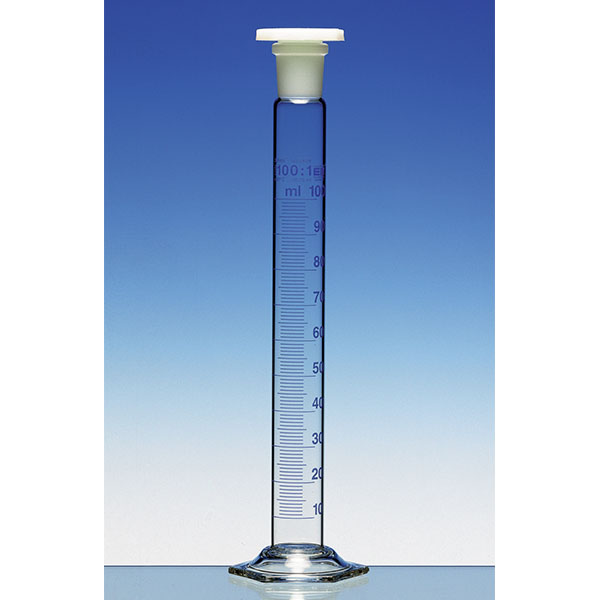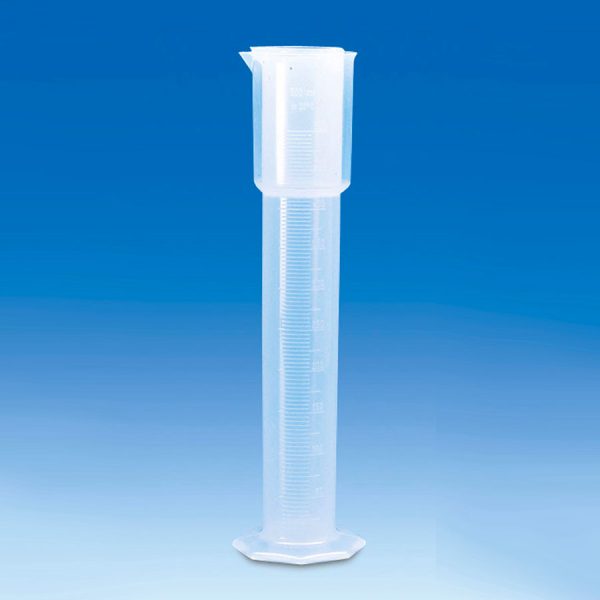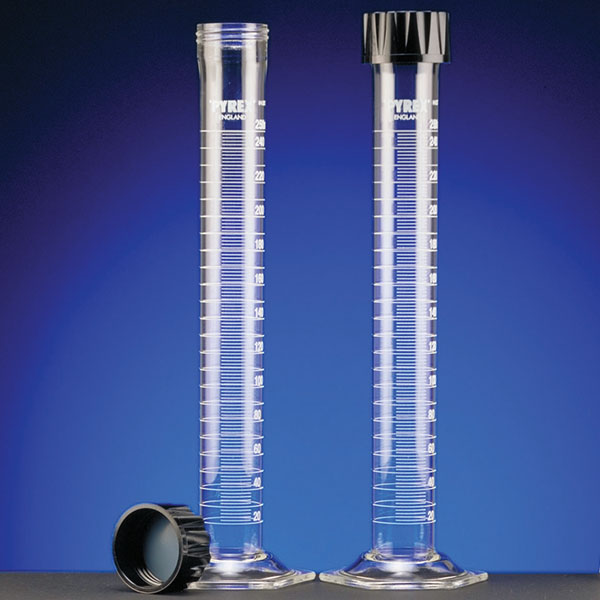Cylinders, also called graduated cylinders, are laboratory equipment used in chemistry to measure the volume of a liquid. They can also be used to measure other materials, such as sand and flour.
Their capacity can vary, but is usually between 10 and 1000 ml. With regard to measurement accuracy, cylinder models are divided into class A and B models. Class A models have twice the accuracy of class B models, i.e. a more accurate graduation scale along the height of the cylinder.
Shape and size of cylinders
These devices consist of a hollow tube with a cylindrical shape. The bottom is flat, closed and fitted with a base. The upper section, on the other hand, is open. In the latter, the material to be measured is inserted and may be fitted with a spout, the purpose of which is to facilitate pouring.
The standard model of cylinder has a slim, elongated shape, in order to be able to measure more accurately. However, there are also alternative models that are lower and wider.
In order to be able to accurately measure the material in the cylinders, they are fitted with a graduation along their height. The unit of measurement used is marked on the base of the unit, which corresponds to the numbered notch reached by the material in the cylinder. The measurement is made on a 3-digit measuring scale. In other words, 100 ml cylinders have a graduation division of 1 ml, while 10 ml models have a graduation division of 0.1 ml.
Material
Cylinders are produced in different materials, depending on the use for which they are used. Very common are borosilicate glass models. However, there are also models made of polypropylene, which is characterised by excellent chemical resistance, and polymethylpentene. Plastics are transparent, lightweight and cheaper than glass, which makes them very common in school laboratories.
Main Uses
The main use of cylinders is to measure the volume of a material, in most cases, a liquid. They are used for more accurate measurement than laboratory glasses or bottles, which are not provided with the same precision.
Alternative models
Some cylinder models are fitted with a stopper, usually made of polypropylene. Alternatively, there are also models with a screw cap. The capped models are clearly without the spout to assist pouring into the upper contour. In addition, models equipped with a handle are also produced.


















